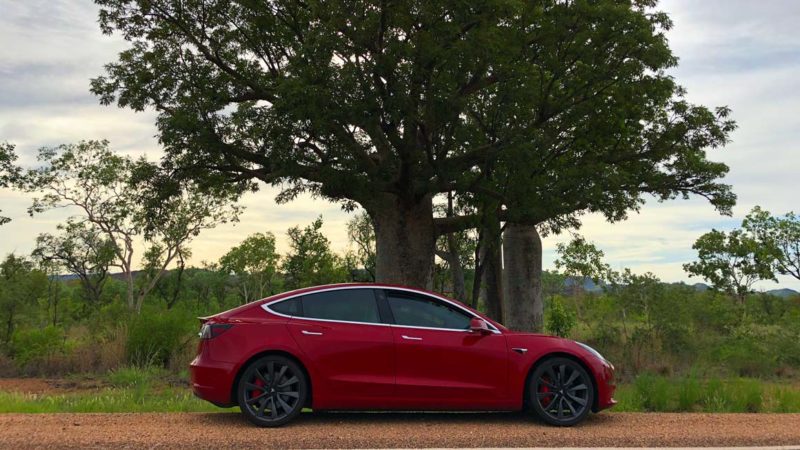The level of luxury car tax imposed on electric vehicle and “fuel efficient” cars in Australia has been quietly relaxed – the first time that EVs and fuel efficient cars have been given a bigger break than their fuel guzzling competitors in more than a decade.
The level of LCT for electric vehicles and fuel efficient cars will be relaxed to $77,565 from today (July 1, the start of the 2020-21 financial year), up from $75,526, while the level for fuel guzzling petrol and diesel cars is relaxed to $68,740 from $67,525.
The changes are believed to have been introduced – without fanfare – in the last two weeks.
It is the first time in more than a decade that the LCT for electric vehicles has moved more than the LCT changes for inefficient petrol and diesel cars. Over the previous 10 years, the LCT for EVs had increased by a paltry total of $526, while over the same period the LCT for inefficient fossil fuel cars jumped from $57,180 to $67,525.

The LCT imposes a tax of 33 per cent for the cost of the vehicle above the threshold. So, a Tesla Model 3 performance version ($97,425) will incur a luxury tax of about $6,560, in addition to GST (about $9,000) and stamp duty (about $4,500 depending on the state).
That’s nearly $20,000 in taxes in a car that costs, after on roads, about $107,000, at a time when most other countries are offering discounts and other incentives for zero emissions vehicles. No wonder Tesla CEO Elon Musk thought that Tesla cars were expensive in Australia.
The new threshold means that recently added EVs such as the Tesla Model 3 standard range plus, and the Hyundai Kona electric Highlander, can fit comfortably below the luxury tax. It remains to be seen to see if the upcoming release of the Model Y in Australia fits under the threshold.
The EV industry has been calling for an abolition of the LCT for electric cars, particularly in light of the absence of any significant rebates or fiscal incentives to encourage uptake of zero emissions transport.
And they argue that lumping EVs and “fuel efficient” cars in the same category is hardly generous, given that for the purposes of the LCT “fuel efficient” includes those cars that claim to consume up to seven litres of petrol for every 100kms.
That means that even cars such as Porsche v6 turbo diesels are avoiding LCT, and it also means that Audi Q7 diesels get the same treatment as the electric Audi E-tron.
The Senate inquiry into EVs run by independent Tim Storer heard that reducing the threshold for LCT to $57,000 for inefficient petrol and diesel cars, and tightening the limit to 4l/100km, would save $1.5 billion over four years, and more than $5 billion out to 2028 – plenty of money to provide further incentives for EVs.
“We believe that the luxury car tax (LCT) should be abolished for EV/Hybrid vehicles as a direct incentive to purchase more environmentally friendly vehicles. United States currently still offer a federal tax credit as an insensitive to purchase EV/hybrid vehicles,” wrotes Brenton Sword, who started a petition on change.org.
Others wonder why Australia has an LCT at all, particularly for EVs, given that it no longer has a domestic car manufacturing industry.
“When was fuel efficiency a luxury?” IT entrepreneur and EV enthusiast Simon Hackett told The Driven last year.
“All new cars should be fuel efficient in 2019, and its not as if LCT tax income is helping the government to support the essentially non-existent local car industry – and nor did it help to save that industry.
“There should logically be a “0% LCT for zero emission vehicles” tier in the LCT tax table. Why would you want to tax cars that are super-efficient (and zero emission) in their use of their fuel?”
As a point of history, the higher threshold for EVs and fuel efficient cars was negotiated by The Greens back in the 2008 to ensure passage of the LCT that was introduced by the then Rudd Labor government.
But by oversight, or a stuff-up, the threshold for fuel efficient cars was indexed at the sub category of motor vehicles, where values have fallen.
The wider LCT is indexed at the broader inflation rate, hence the narrowing gap in recent years. Someone, however, has pointed out the absurdity of the two thresh-holds possibly merging within a few years.
The best option would to reestablish the index rates and simply make it eligible to electric cars only, or drop the LCT for EVs altogether.

Giles Parkinson is founder and editor of The Driven, and also edits and founded the Renew Economy and One Step Off The Grid web sites. He has been a journalist for nearly 40 years, is a former business and deputy editor of the Australian Financial Review, and owns a Tesla Model 3.

